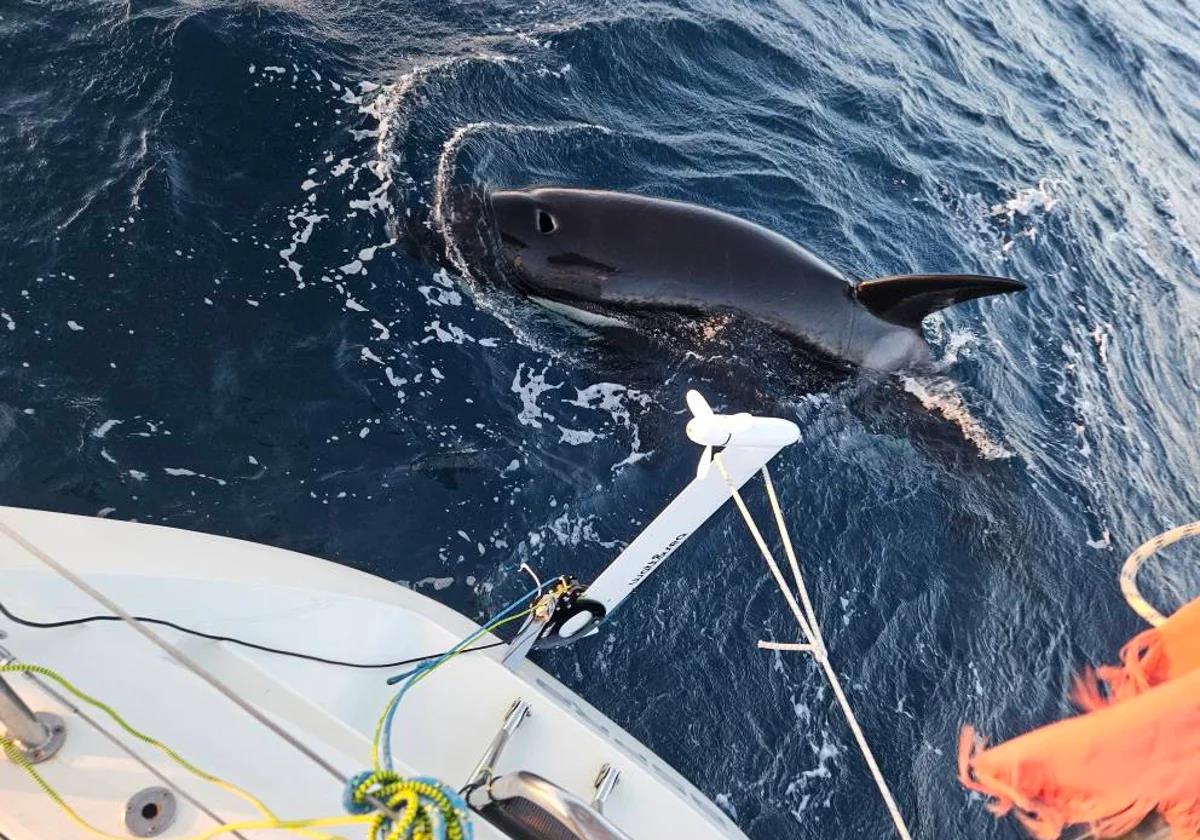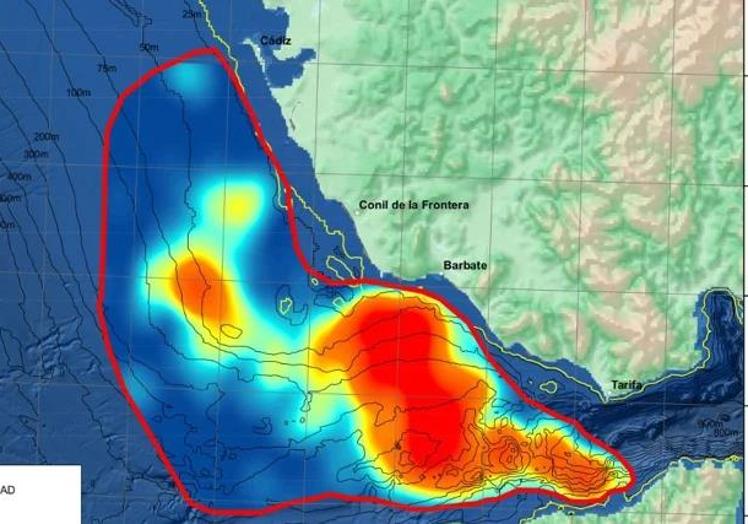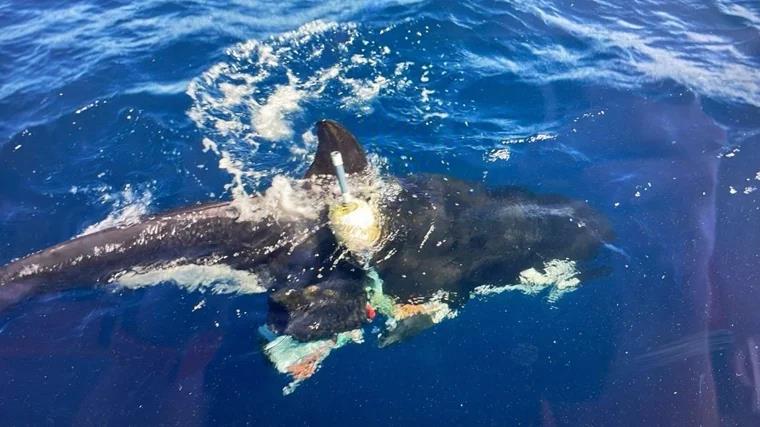

Sections
Highlight

J. M. Aguilera
Seville
Tuesday, 22 April 2025
"I had prepared for the storm; I could never have imagined that a pod of killer whales would have attacked me in the Strait of Gibraltar," said Alessandro Tosetti, an Italian architect and sailing enthusiast, who reported an interaction with orcas off the Spanish coast of Cadiz last weekend.
In recent years (since 2020), this phenomenon has been increasing, although the reasons behind these more frequent encounters remain hypothetical at the moment. Experts are considering different theories: from the possibility of engaging in a game to a training for catching tuna, which have proliferated in the area after a long time of scarcity due to poaching. It was even suggested that the matriarch of the group, named Gladis, might have had an unpleasant experience with a boat, which has prompted the collective attacks on sea vessels.
Spain's Ministry of Ecological Transition (Miteco) has been studying the motives, monitoring the radius of action of this group and the dates (between April and September) when these 'interactions' took place, as they want to avoid using the aggressive term 'attack'. So far, there have been no human injuries as a result of these episodes, but there has been considerable material damage, as in most cases they break the rudder and leave the sailboat adrift, with the risk of shipwreck.
"They were large animals of more than five metres in length. I've been told it is a family group, which, for about half an hour, damaged the sailing boat Aspra, especially its rudder," said Alessandro, recalling the "snap" with which it all started. "I followed the procedure I read about: turn off the autopilot and sonar, closed the sails... Nothing worked," he said.
The boat was "adrift in the middle of the Strait, with other ships in transit. I asked for help from the Tarifa MRCC vessel, thinking that I would be swept away". However, he managed to free the rudder and steered the yacht for twelve nautical miles, "until it reached the port of Tarifa, escorted by the tug that had arrived. Then, it started flooding".
"It was there that I discovered the rudder blade had been smashed to bits," he said, showing photos of the damage.

The authorities have insisted on extreme caution in this area, which stretches from Conil to Tarifa. There have been times when they have even banned sailing due to the risk of drifting in this transit zone or of the boat sinking. Killer whales usually interact single-hulled sailing boats of less than 15 metres in length, with a spade rudder.
Miteco recently organised and coordinated a rescue operation for a specimen of orca (orcinus orca) that had a buoy, a barrel, ropes, and remnants of longline fishing gear entangled in its right pectoral fin, putting it in a "clear state of risk", as it prevents its free movement and feeding.

On Friday 18 April, Miteco learned of the sighting of a group of at least 11 killer whales hunting tuna fish some five nautical miles north of Cabo Espartel, moving between the territorial waters of Spain and Morocco. The entangled specimen belonged to that group.
Due to the unfavourable sea conditions over the weekend, an operation was launched early on Monday morning to search the waters of the Strait of Gibraltar and locate the specimen. The task proved to be successful. Miteco is now working to disentangle the mammal.
The orca population in the Strait of Gibraltar and the Gulf of Cadiz is listed as vulnerable in the Spanish catalogue of endangered species (CEEA). Any action taken for the purpose of killing, capturing, persecuting or disturbing any species included in the CEEA is banned. A conservation plan outlines protection measures specifically in the case of orcas in the Strait and the Gulf of Cadiz.
Furthermore, there is a royal decree, which establishes measures for the protection of cetaceans, including the ban on approaching with a boat within 60 metres of them; feeding the animals; throwing food, drinks, rubbish or any other type of object or solid or liquid substance that is harmful to cetaceans; producing loud or strident noises and sounds in an attempt to attract or drive them away, including the emission of sounds underwater.
Publicidad
Publicidad
Publicidad
Publicidad
Esta funcionalidad es exclusiva para registrados.
Reporta un error en esta noticia

Debido a un error no hemos podido dar de alta tu suscripción.
Por favor, ponte en contacto con Atención al Cliente.

¡Bienvenido a SURINENGLISH!

Tu suscripción con Google se ha realizado correctamente, pero ya tenías otra suscripción activa en SURINENGLISH.
Déjanos tus datos y nos pondremos en contacto contigo para analizar tu caso

¡Tu suscripción con Google se ha realizado correctamente!
La compra se ha asociado al siguiente email
Comentar es una ventaja exclusiva para registrados
¿Ya eres registrado?
Inicia sesiónNecesitas ser suscriptor para poder votar.